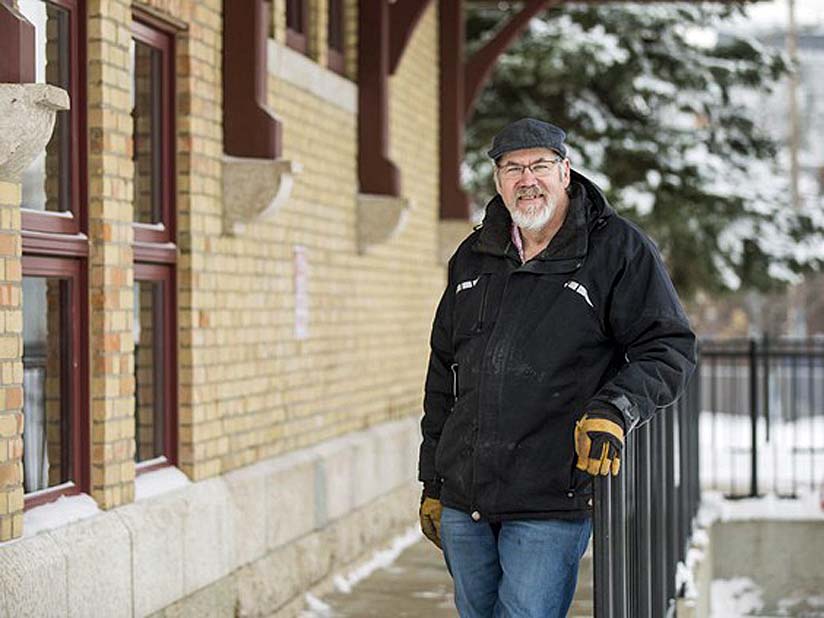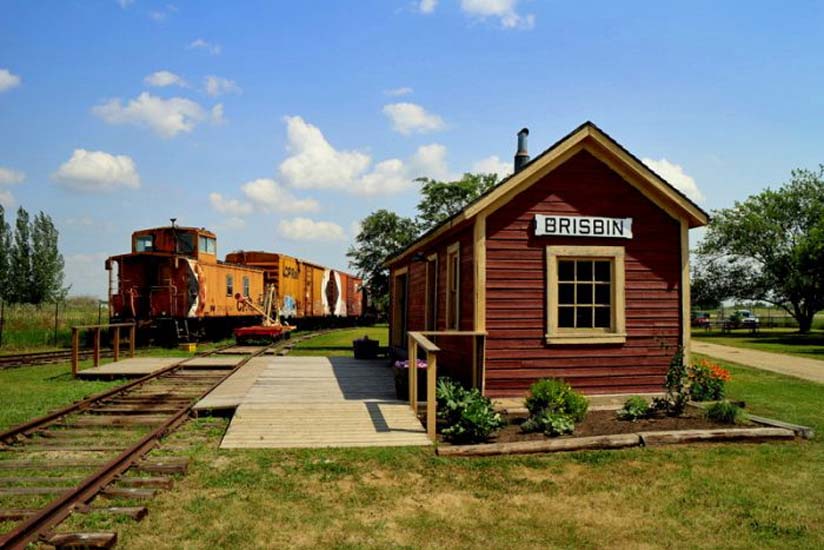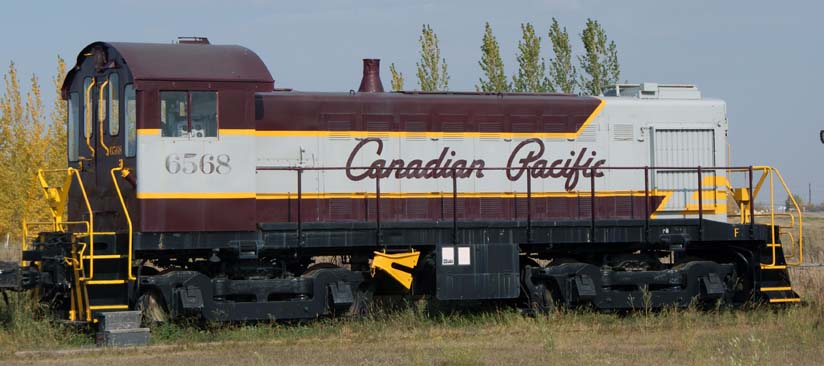
Saskatoon Saskatchewan - Cal Sexsmith's interest in trains started when he was still a boy.
For his first Christmas, his parents gave him a model train set.
Not a toy train made of plastic or wood, but a well-built replica train set.
Sexsmith said he wasn't allowed to play with it properly until he was 12, and once he did, he was hooked.
"It wasn't until I went to school that I realized kids had toy trains. I thought model railroads were an adult hobby, which I still do," he
said.
Despite an early interest in trains, Sexsmith, one of the founding members of the Saskatchewan Railway Museum, probably couldn't have predicted that he'd
devote more than 30 years of his life to volunteering for the museum.

"I'm also very interested in history. The historical aspect is part of it, and I enjoy the teaching aspects of it, talking to the public when they
come through," he said.
As a civil engineer by trade who worked for the City of Saskatoon for many years before his retirement, it's hard to find something about trains that Sexsmith
doesn't know, especially when it comes to Saskatchewan.
There's a rich history to go along with the railways in the province, and as Sexsmith likes to say, the railways are responsible for the creation of the
majority of settlements in Saskatchewan.
As the current and former board chair and the de facto collections manager for the museum, Sexsmith gets a close look at every new piece that comes
in.
From station planning maps, to signposts, to much bigger pieces, he has a hand in cataloguing every little bit of that history for the museum.
"The need for a museum of any sort is a way of remembering our past. It's a way of preserving that history. It's better to observe it and interpret it
near to where it was actually used," he said.
When the first discussions to establish a railway museum were taking place at the train show in Saskatoon in the late 1980s, Sexsmith said he offered to
help.
By the time the museum along Highway 60 was actually opening, he was ingrained as a founding member.
"I am considered to be a charter member, though I was not at the initial planning and organization meetings. I stayed in the background for the first five
years, then a couple years after that I got elected to the board," he said.
As Sexsmith tells the story, when the Saskatchewan Railroad Historical Association (SRHA) was searching for a place to put the museum, it already had some
rather sizable donations, full-sized train cars that were stored at the nearby Canadian National Railway yard thanks to a supportive yard manager.
The first three pieces of the museum were an S3 diesel locomotive, a steel CN boxcar, and a wooden caboose.

"We had all of those before we had a property," Sexsmith said with a chuckle.
"The site that we ended up with was originally called the Eaton siding. CN said if we would confirm with the municipality it was okay for us to set up our
museum there, they would lease us our front portion."
PJ Kennedy, a Saskatoon writer and longtime volunteer with the SRHA, remembers feeling confused when he saw a Canadian Pacific engine in a field near a CN rail
yard along the highway to Pike Lake.
Also a fan of railway history, Kennedy stopped in to see what was going on.
That was the first time he met Sexsmith.
By the time he left the yard, Kennedy was signed up to volunteer for the new museum.
"We're all volunteers out there, but he brings a thoroughness to things, as well. When we're doing applications for grants, when we're being represented
nationally, or internationally, he does a wonderful job," Kennedy said.
Though Kennedy has been a volunteer for decades, he credited Sexsmith with being "the glue that holds the organization together."
When Sexsmith talks about the creation and operation of the museum, he refers to himself as a small part of a much larger force putting everything
together.
And while Kennedy said a lot of people contributed their time and abilities to making the museum a reality, Sexsmith has always been a constant for the museum
and the SRHA.
"Throughout the 30 plus years I've known him, he's always been there. He's been there when he's been needed," Kennedy said.
Bill Rafoss, a volunteer with the museum and the SRHA since 1995, said Sexsmith provided invaluable guidance for the organization.
"Cal is our leader, no doubt about it. Always has been, probably always will be. He operates at a pretty high level," Rafoss said.
Both Kennedy and Rafoss had similar things to say about Sexsmith, touting his attention to detail, and his keen intellect in all facets of his work, which
likely comes from a long and successful professional career as an engineer.
Both men used the same phrase to describe him.
"A lot of us refer to Cal as a walking encyclopedia of trains. He probably knows more about rail cars and railway buildings and railroads themselves than
anybody else in the province, I would expect," Rafoss said with a laugh.
There really doesn't seem to be much that Sexsmith isn't able to tell a visitor about the railway in Saskatchewan, or items in the museum yard.
If there's a question to be asked, it's almost guaranteed that he knows the answer, or will have it in short order.
As Kennedy puts it, if a train rolls by the museum, Sexsmith can tell where it was built, what kind of horsepower the engine has, and how long it's been in
operation.
"I can't think of a time when I haven't gone out there and you'd ask a question and he wouldn't have a very thorough answer," Kennedy
said.
For Sexsmith, it's about obtaining knowledge and preserving history.
Thirty-some years of volunteering for the railway museum have only added to that breadth of knowledge, and Sexsmith admitted the first thing he always looks
for when new donations arrive is something that he can add to his railway repertoire.
"I'm always looking to see if there's something new that I don't know, or to confirm something I thought I knew. My real interest at the museum isn't so
much the rolling stock and the buildings, so much as the archives and the documentation, that's sort of how I came into it," he said.
The museum has certainly grown over the years, adding buildings and rail cars and thousands of historical documents.
It's even reached a point where Sexsmith and other volunteers have had to develop their own reference system for their small train history archive of
information.
His involvement is unpaid, and after decades of being involved, no one could argue Sexsmith hasn't put in his time.
He's even tried to step down, and step away multiple times, his current stint as board chair is certainly not his first, but he continues to be asked back to
share his expertise.
"At some point I'll probably slow down my involvement with the museum again, but I just find if I put something into it, I just get more out of it. Gives
me something to do," Sexsmith said.
Matt Olson.
(because there was no image with original article)
(usually because it's been seen before)
provisions in Section 29 of the Canadian
Copyright Modernization Act.

